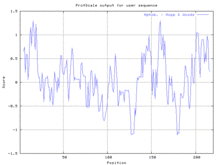Riboflavin kinase
| riboflavin kinase | |||||||||
|---|---|---|---|---|---|---|---|---|---|
ExPASy NiceZyme view | | ||||||||
| KEGG | KEGG entry | ||||||||
| MetaCyc | metabolic pathway | ||||||||
| PRIAM | profile | ||||||||
| PDB structures | RCSB PDB PDBe PDBsum | ||||||||
| Gene Ontology | AmiGO / QuickGO | ||||||||
| |||||||||
| Riboflavin Kinase | |||||||||
|---|---|---|---|---|---|---|---|---|---|
| |||||||||
| Riboflavin kinase | |||||||||||
|---|---|---|---|---|---|---|---|---|---|---|---|
| Identifiers | |||||||||||
| Symbol | Riboflavin_kinase | ||||||||||
| Pfam | PF01687 | ||||||||||
| InterPro | IPR015865 | ||||||||||
| |||||||||||
In
- ATP + riboflavin ADP + FMN
Thus, the two
.Riboflavin is converted into catalytically active cofactors (FAD and FMN) by the actions of riboflavin kinase (EC 2.7.1.26), which converts it into FMN, and FAD synthetase (EC 2.7.7.2), which adenylates FMN to FAD. Eukaryotes usually have two separate enzymes, while most prokaryotes have a single bifunctional protein that can carry out both catalyses, although exceptions occur in both cases. While eukaryotic monofunctional riboflavin kinase is orthologous to the bifunctional prokaryotic enzyme,[2] the monofunctional FAD synthetase differs from its prokaryotic counterpart, and is instead related to the PAPS-reductase family.[3] The bacterial FAD synthetase that is part of the bifunctional enzyme has remote similarity to nucleotidyl transferases and, hence, it may be involved in the adenylylation reaction of FAD synthetases.[4]
This enzyme belongs to the family of
However, archaeal riboflavin kinases (EC 2.7.1.161) in general utilize CTP rather than ATP as the donor nucleotide, catalyzing the reaction
- CTP + riboflavin CDP + FMN [5]
Riboflavin kinase can also be isolated from other types of bacteria, all with similar function but a different number of amino acids.
Structure


The complete enzyme arrangement can be observed with
As of late 2007, 14
References
- ^ PDB: 3CTA; Bonanno, J.B.; Rutter, M.; Bain, K.T.; Mendoza, M.; Romero, R.; Smith, D.; Wasserman, S.; Sauder, J.M.; Burley, S.K.; Almo, S.C. (2008). "Crystal structure of riboflavin kinase from Thermoplasma acidophilum".
{{cite journal}}: Cite journal requires|journal=(help) - PMID 14580199.
- PMID 17049878.
- PMID 12517446.
- PMID 18073108.
Further reading
- CHASSY BM, ARSENIS C, MCCORMICK DB (1965). "The Effect of the Length of the Side Chain of Flavins on Reactivity with Flavokinase". J. Biol. Chem. 240 (3): 1338–40. PMID 14284745.
- GIRI KV, KRISHNASWAMY PR, RAO NA (1958). "Studies on plant flavokinase". Biochem. J. 70 (1): 66–71. PMID 13584303.
- KEARNEY EB (1952). "The interaction of yeast flavokinase with riboflavin analogues". J. Biol. Chem. 194 (2): 747–54. PMID 14927668.
- McCormick DB; Butler RC (1962). "Substrate specificity of liver flavokinase". Biochim. Biophys. Acta. 65 (2): 326–332. .
- Sandoval FJ, Roje S (2005). "An FMN hydrolase is fused to a riboflavin kinase homolog in plants". J. Biol. Chem. 280 (46): 38337–45. PMID 16183635.
- Solovieva IM, Tarasov KV, Perumov DA (February 2003). "Main physicochemical features of monofunctional flavokinase from Bacillus subtilis". Biochemistry (Moscow). 68 (2): 177–81. S2CID 35221624.
- Solovieva, I.M.; Kreneva, R.A.; Leak, D.J.; Perumov, D. A. (January 1999). "The ribR gene encodes a monofunctional riboflavin kinase which is involved in regulation of the Bacillus subtilis riboflavin operon". Microbiology. 145: 67–73. PMID 10206712.

